Exploring the City of Cusco and Beyond - The Perfect Itinerary
Being, the largest city closest to Machu Picchu, Cusco acts as a hub for most visitors to the region. The city center can be explored on foot while the outskirts offer activities and sights which can be accessed with a driver.
At an altitude of 3,399 meters it’s often the city where most people acclimatize before embarking on the Inca Trail. While I recommend acclimatizing in the lower altitude cities, within the Sacred Valley, Cusco is still a great option to spend a few days preparing the body for what lies ahead.
This guide will give an overview of some of my favourite experiences in Cusco along with all the details to help plan the perfect itinerary.
GO IF YOU LIKE:
STREET FOOD | MARKETS | INCA HISTORY | COLOURFUL STREETS | LIVELY CITIES
2-Day Cusco itinerary
Itinerary at a Glance
Day 1 (The Outskirts)
Tambomachay, The Ccochahuasi Animal Sanctuary, Pisac Market, Pisac Ruins, Saqsaywaman
Day 2 (The City Center)
The Cusco Cathedral, San Blas, Plaza de Armas, San Pedro Market, Street-Food Tour, Cusco Planetarium
Expand the legend on my map for the detailed itinerary
My favorite things to do in Cusco
TASTE real life at the San Pedro MArket
Known for their juices, the San Pedro Market is a popular spot for both tourists and locals. This massive indoor market has row-after-row of well….everything.
Start in the textiles section, browsing through colourful garments and nicknacks. Learn about how to spot synthetic garments so you can bargain like a boss.
Next in the market are the juice ladies. They’ll call out claiming they have the best juice as they compete to make a sale. Give the juice a try, just make sure there’s no ice or water.
Next are the fruit stands, flower booths, cheeses, ready-made food, the macabre meat section and much more.
It’s really overwhelming and that’s what makes it so fun.
Plan Your Visit to San Pedro Market
Hours of Operation: Monday-Sunday 9am-6pm (mornings are better)
Cost: Free entrance
How to Eat Safely at San Pedro Market
Eating at the San Pedro Market is an adventure. Corinne, the owner of Curious Monkey food tours, gave me some great tips for enjoying the market in a safe and fun way:
Avoid eating at the market on your first or second day in Cusco or before any hiking. Your stomach needs time to adjust to the altitude and food.
Stick to soup, roasted, fried and well done meats
Avoid ceviche and raw items like vegetable and salads
Fruits and vegetable should be peeled
Try the Pan Chuta in the bread aisle it dates back to Inca times and is cooked in a wooden oven every morning
Try a fresh juice, just make sure it is freshly extracted with no ice or water
Book a Cusco Food Tour
Curious Monkey Food Tours offers guided visits to San Pedro Market, along with other street food tours (read about this in the "Fill My Belly" section below). It's a great way to sample the best foods, without any worry.
Curious Monkey is offering a 10% Discount to all my subscribers for tours of groups of 2 or more.
SUPPORT RESCUEd ANIMALS At the Ccochahuasi Animal Sanctuary
Just outside the city is The Ccochahuasi Animal Sanctuary. The animals in this place have either been rescued from injury or poaching. They have hairless dogs, llamas, alpacas, puma, a speckled bear, parrots and several condors.
While I’m often skeptical of animal sanctuaries, I quite liked this one. It’s small, but the volunteers seemed very passionate about the animals which speaks volumes to how ethical of a place it is.
We had a friendly French volunteer who showed us the animals and told us the stories of how they ended up at the sanctuary. It’s a great stop on the way to the further sites like Pisac.
Plan your visit to the Ccochahuasi Animal Sanctuary
Hours of Operation: Monday-Sunday 8am-5pm
Cost: 50 soles which included a tour of the facilities.
Shop at the PISAC MArket
There are tons of markets across the Cusco region and they sell similar goods at every major tourist hub. The Pisac market, in my opinion, was the best.
There were some interesting shops that had local art, silver, blankets and garments. Since we visited on a Sunday, the local market was open and filled with Quechua vendors from the surrounding communities.
Know that the market sees lots of tourists and it may feel overwhelming trying to bargain with seasoned vendors. Look before committing to any purchases.
We went with a guide so he was able to explain the difference between synthetic fabrics vs. real fabrics. I outlined this at the end of my article on the weavers of Patacancha.
Plan Your Visit to Pisac Market
Hours of Operation: 8.30am-4.30pm every Sunday, Tuesday, and Thursday, with Sunday being the best day to visit because of the outdoor, artisanal market.
Cost: Free to enter the market
Look Down on Pisac and visit the Ruins
The Pisac ruins are an incredible sight. They’re situated on a hill, above the city of Pisac, at the top of agricultural terraces. I didn’t have a chance to go inside and explore the ruins but I would have really liked to. From what I’ve been told there is the main building, the Temple of the Sun along with a ceremonial area, baths and water fountains.
It is possible to hike to the ruins from the city of Pisac. The timing is around two hours to ascend with lots of steps and on a steep incline. The elevation is 3,347m, so it isn’t advised to do this during the first few days in the region, while still acclimating to the altitude.
Being short on time, we drove to the top and even though we couldn’t explore the ruins, the views were spectacular and worth the trip.
Plan Your Visit to the Pisac Ruins
Hours of Operation: The ruins are open every day of the week from 7am-5.30pm.
Cost: Entrance is included as part of the Boleto Turístico which can be purchased on-site. Depending on which ticket is purchased, the minimum is 70 soles.
Get close up to the gigantic rocks at Saqsaywaman
Does the name Saqsaywaman make you giggle? Yes, it sounds like “sexy woman” and no it has nothing to do with them. This is a site that some archeologists say dates back to pre-Inca civilizations.
It’s not too far out of the city. And while many tourists come to marvel at the intricate stonework, it seemed to be a relaxing park for locals to enjoy a walk with their families.
The real appreciation for the stonework comes when looking at the larger rocks up close. These rocks were transported from a quarry, in this case it’s said to have been over 4km away. The theory is that there was a large population at the time and it was simply a huge amount of manpower that moved the rocks.
The rocks are limestone, making them on the softer side. It is believed that hematite hammers were used to chisel them. It’s fascinating to see how they fit perfectly into one another, without the use of any mortar to hold them together.
Plan Your Visit to Saqsaywaman
Hours of Operation: Monday-Sunday - 7am-5.30pm
Cost: Included as part of the Boleto Turistico Delcusco
See the Starry SkY At the Cusco Planetarium
The Cusco Planetarium is a small, family-run business and it was one of my favourite experiences in Cusco.
The planetarium itself is located just outside the city but they organize a pickup from an agreed upon spot in the city center. Upon arrival it was pitch black (which was good for stars) and we were ushered into the building by flashlight.
We were then given an insightful talk into the symbolism behind many Inca sights and then whisked away into the presentation auditorium. This room (not photographed) was cozy yet technically impressive. The owners had setup an interactive presentation that projected on the walls and ceiling. We were told stories about all the different constellations and the Inca meanings behind them.
The final part of the tour was to go outside and look at the stars through the telescope. Unfortunately for us it was foggy and rainy, so there was no visibility. Regardless, it was a fun and educational experience.
Plan Your Visit to the Cusco Planetarium
Hours of Operation: Private presentations are at 7.15pm
Cost: Price per person 50 soles. Students or children 30 soles. Includes transportation from Cusco to the planetarium.
Explore the museums and Cusco Cathedral
Being the ancient capital of the Incas, Cusco has a lot to offer in terms of history. There are an array of museums within the city center. Some are focused on history but there are also cultural and art museums.
Located in the Plaza de Armas, is the Cusco Cathedral (above). It’s a gothic-style cathedral that resembles the Spanish cathedrals of a similar period. Inside are Colonial paintings.
The Museo de Sitio Qorikancha, not to be confused with the Qorikancha temple located above it, is a rather dated museum which provides exhibitions on Inca metalwork, textiles, sculptures etc. I also visited, and preferred, the Museo Historico Regional (below), which focuses on regional history from the pre-Inca, Inca and Colonial periods.
My personal opinion was that the museums and Cathedral were interesting but if timing is tight, the sights further outside of the city are more impressive. Here is a 2-week itinerary for Peru if you’re still trying to work out your timing.
Plan Your Visit to the Cusco Cathedreal
Cusco Cathedral Hours of Operation: Monday – Sunday from 10am-6pm
Costs: 25 soles ($ 8USD)
Museum Costs: Museo de Sitio Qorikancha and the Museo Historico Regional are included in the Boleto Turistico Delcusco
Fill that Belly
Cusco is the largest city in the region so it’s no surprise there are some good places to eat. The trouble is, the altitude can suppress one’s appetite. Regardless, here are some standout meals:
Dona Clorinda


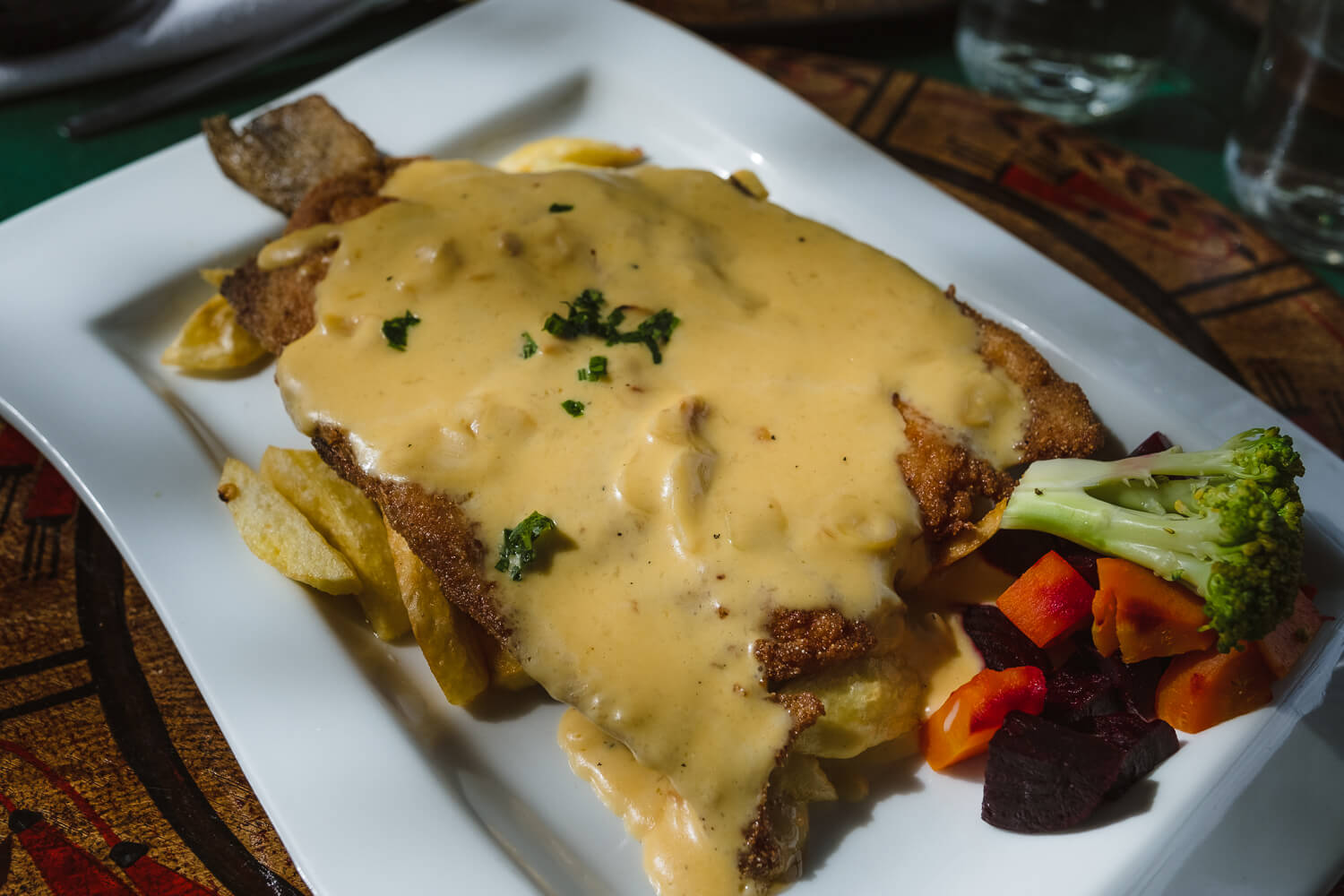
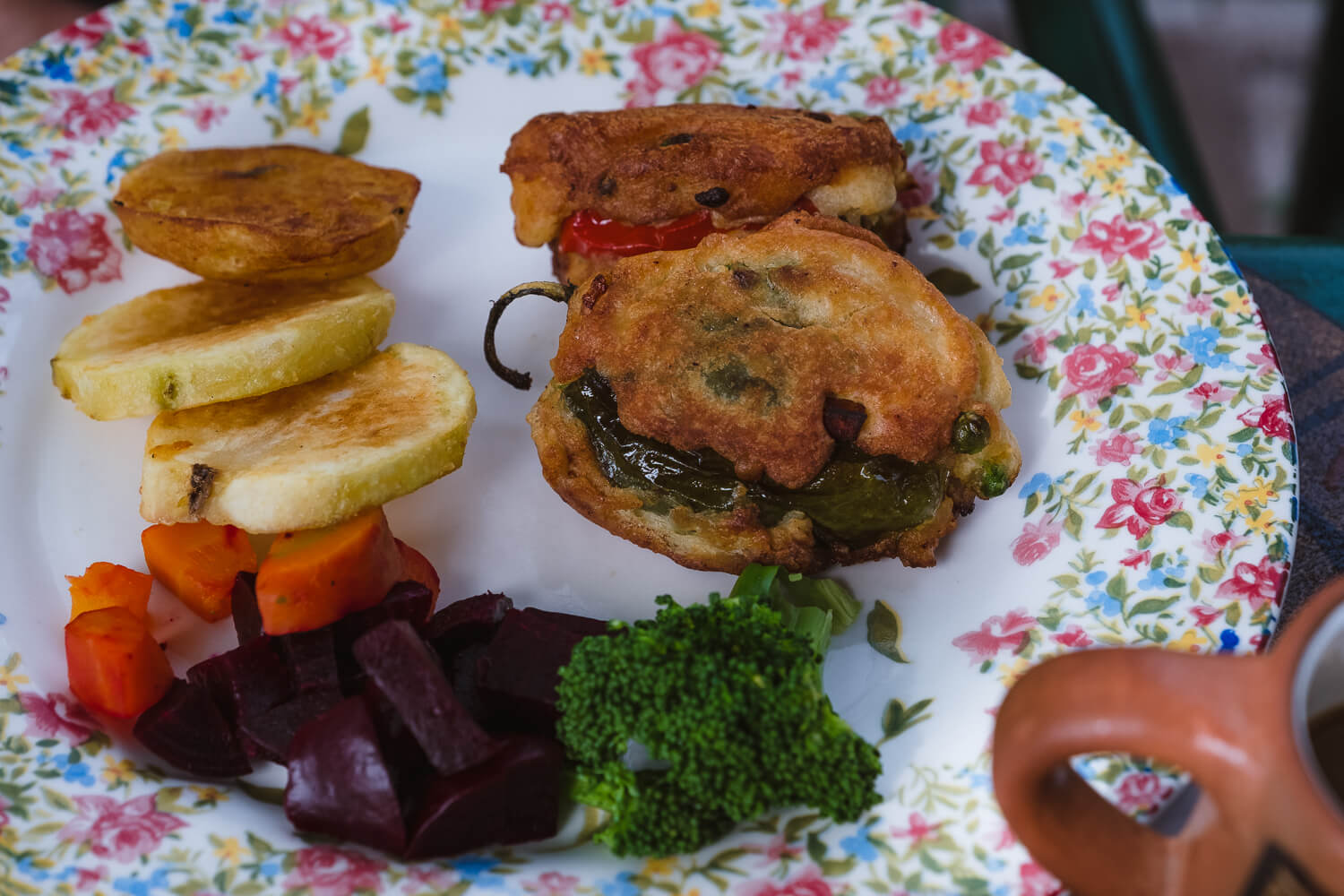
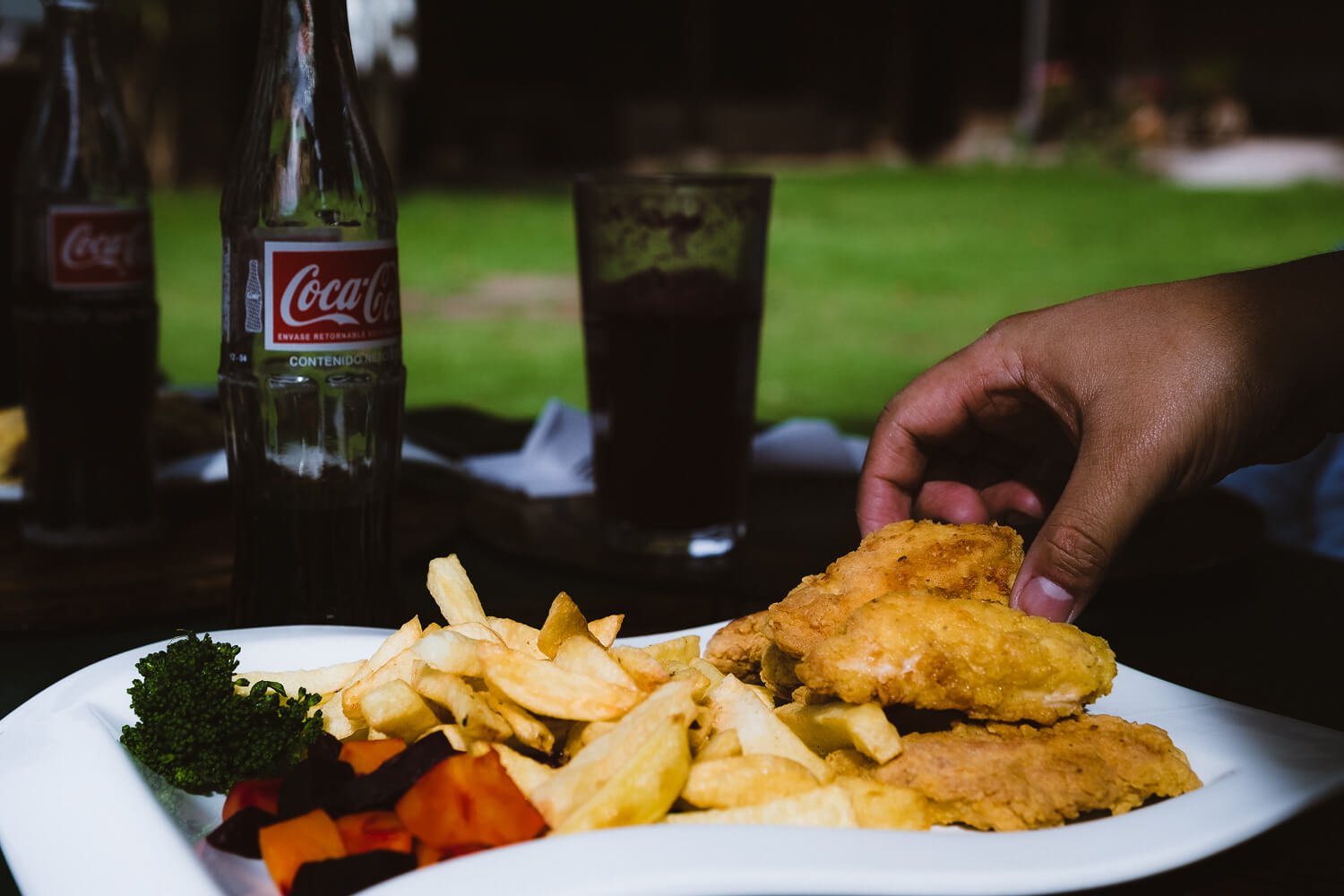
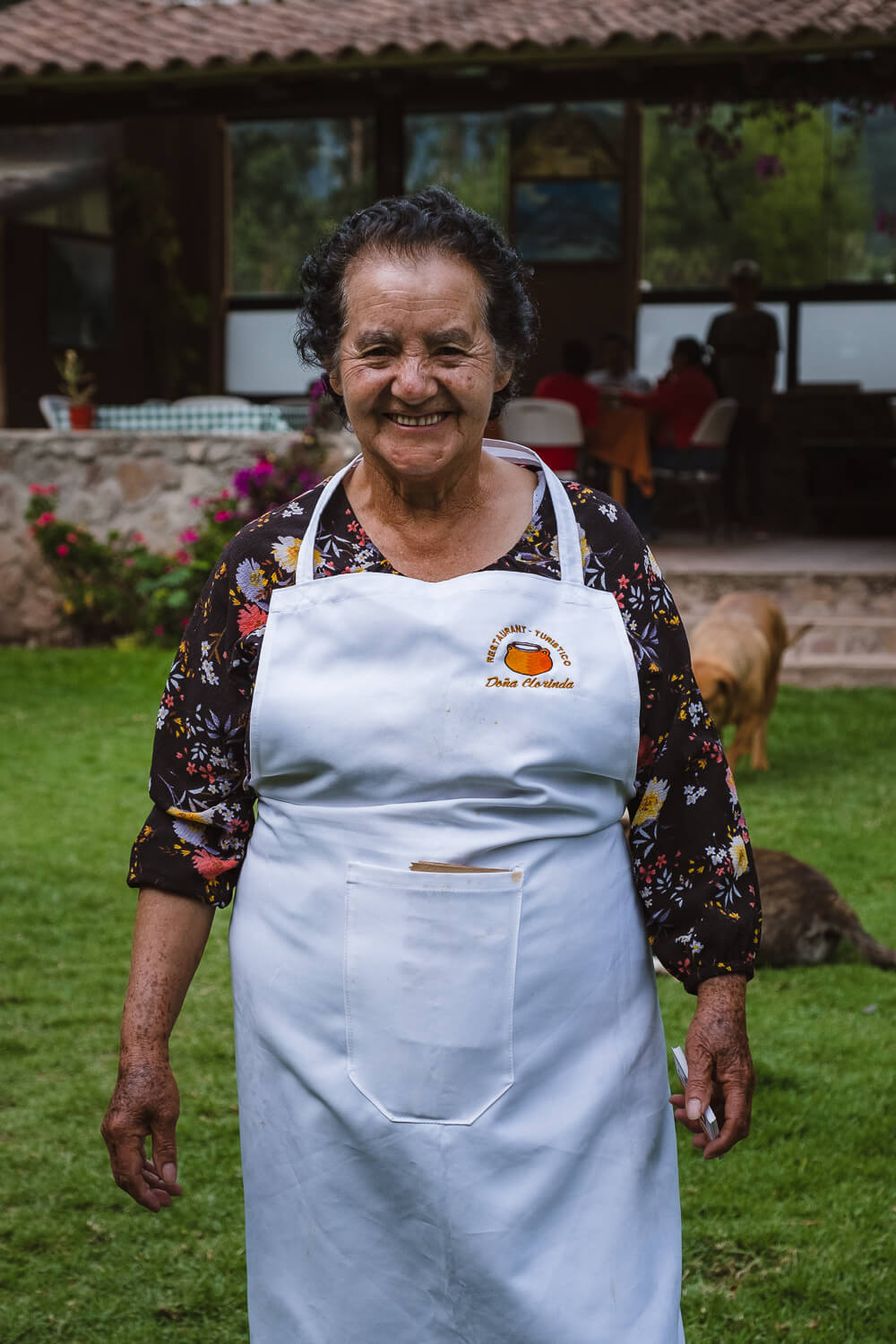
This was a happy surprise of a restaurant. One that wasn’t planned but a result of having a good local guide. Carlos (our guide) recommended we stop here for lunch while visiting Pisac and it was delicious!
The tables were set outside in the garden, it was calm and filled with local families enjoying their meals. It’s run by Dona Clorinda herself, an incredibly warm and talented chef. The meals were traditional, and comforting. A special shoutout to the fried trout with the garlic butter sauce.
Are you a foodie?
Check out my Food Guide to Peru. Complete with my favourite meals and helpful food safety tips.
Street food tour with curious Monkey
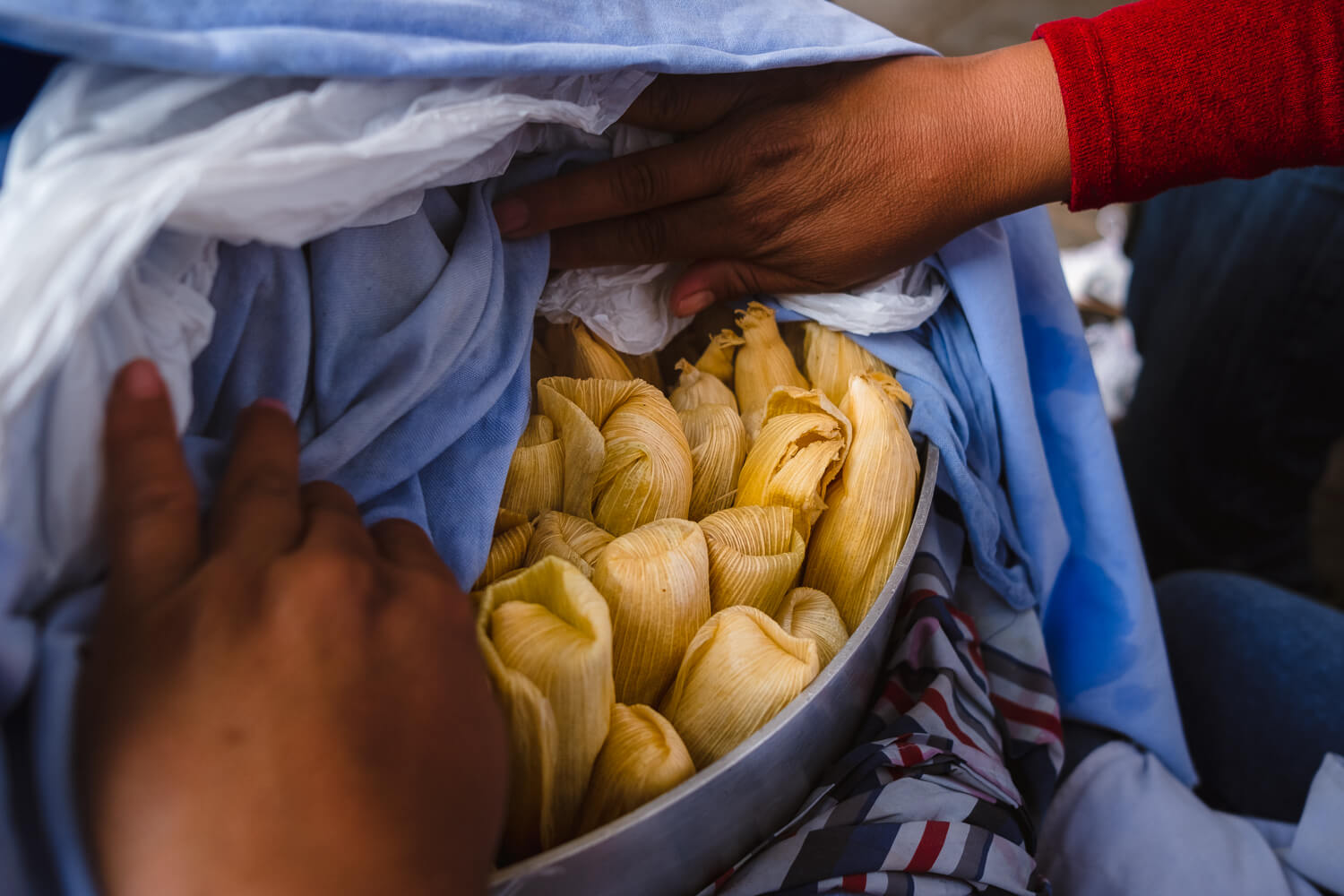
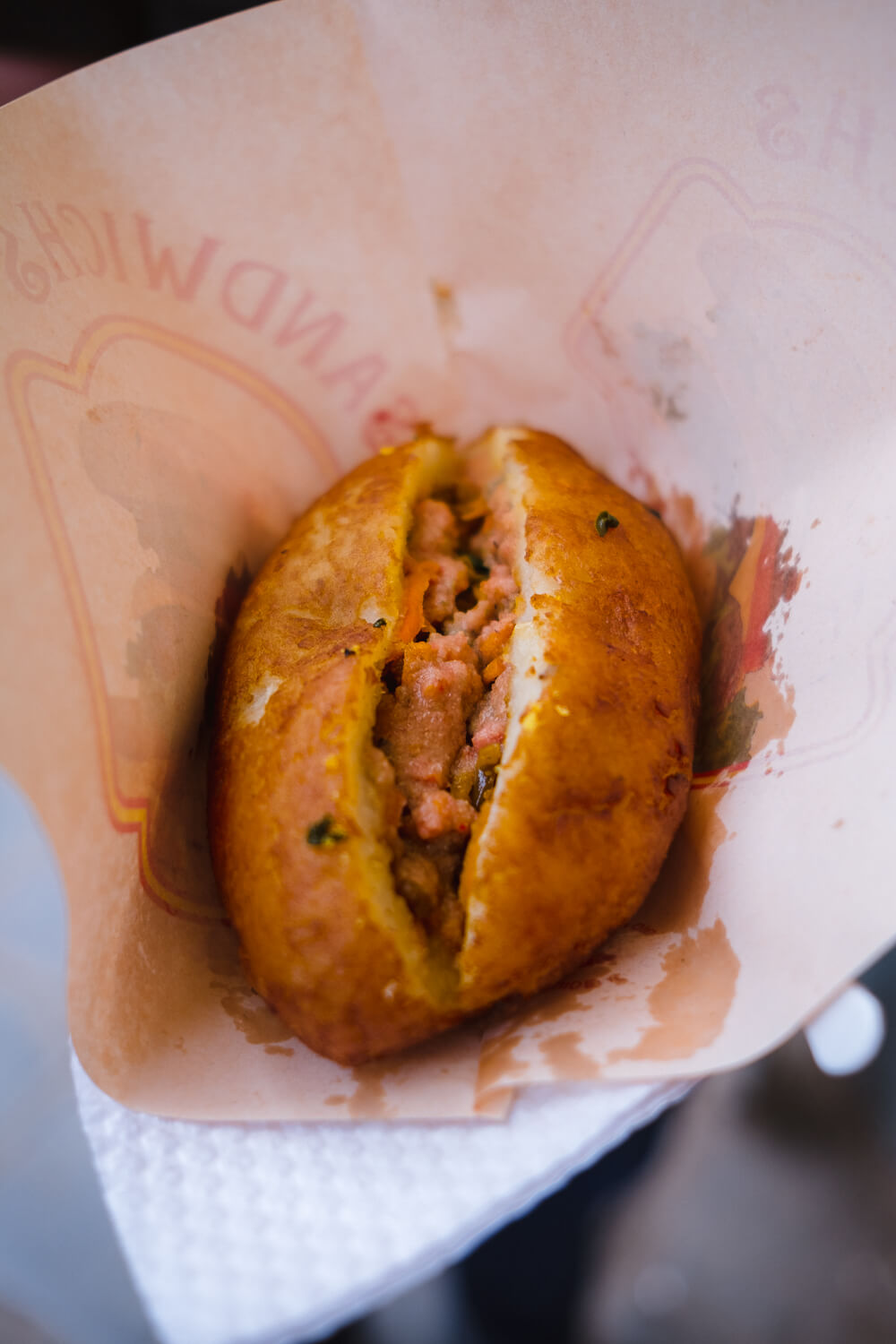
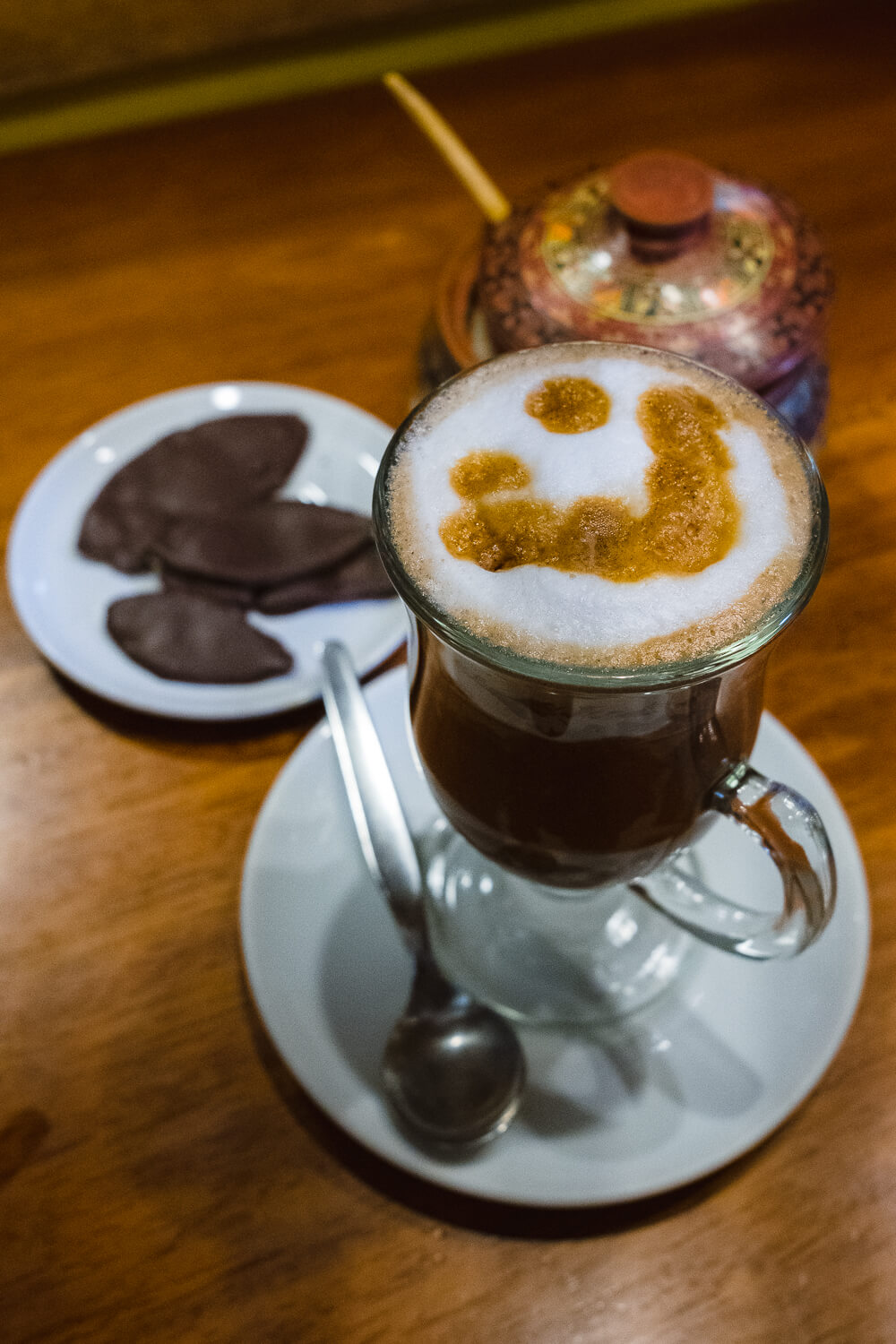
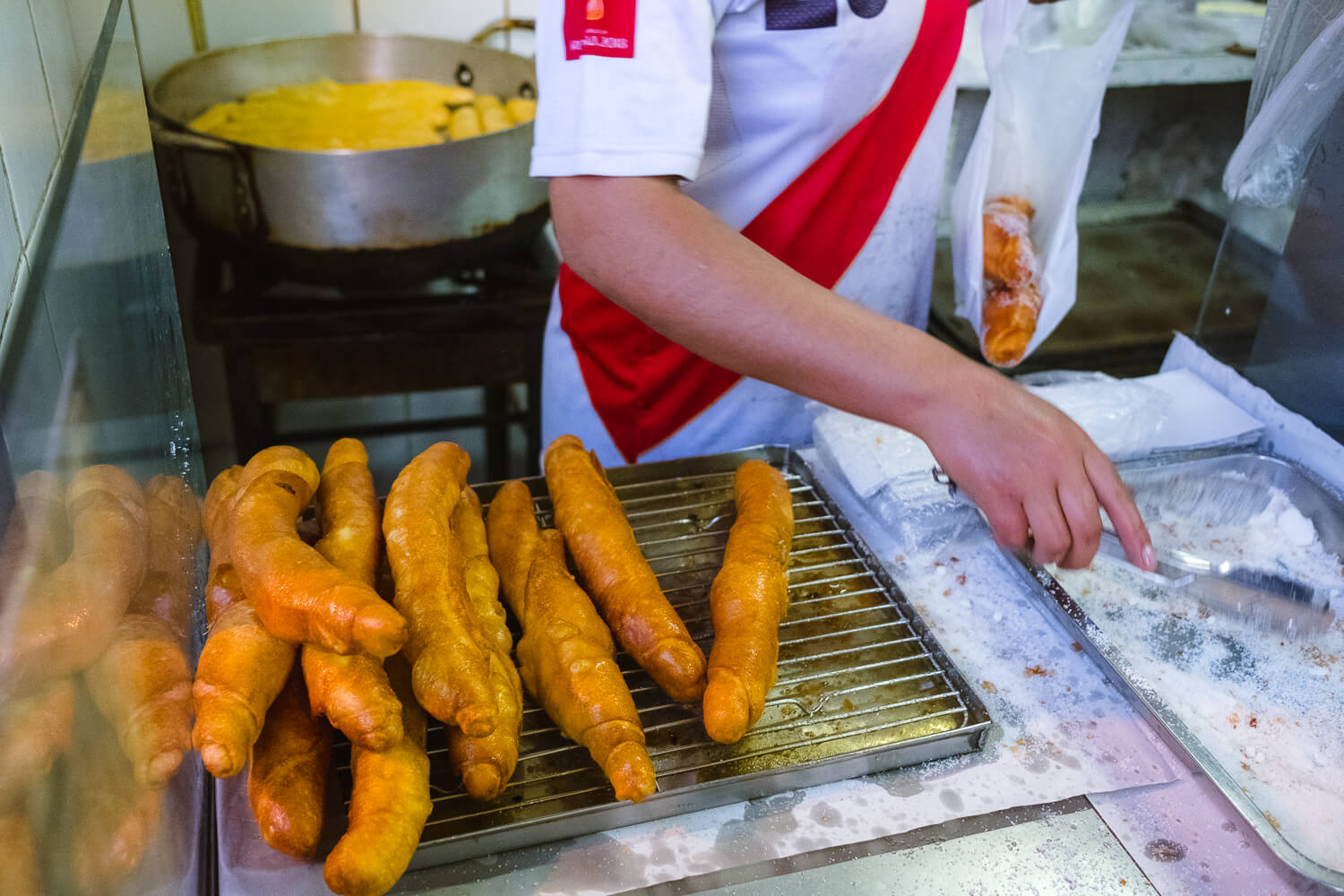
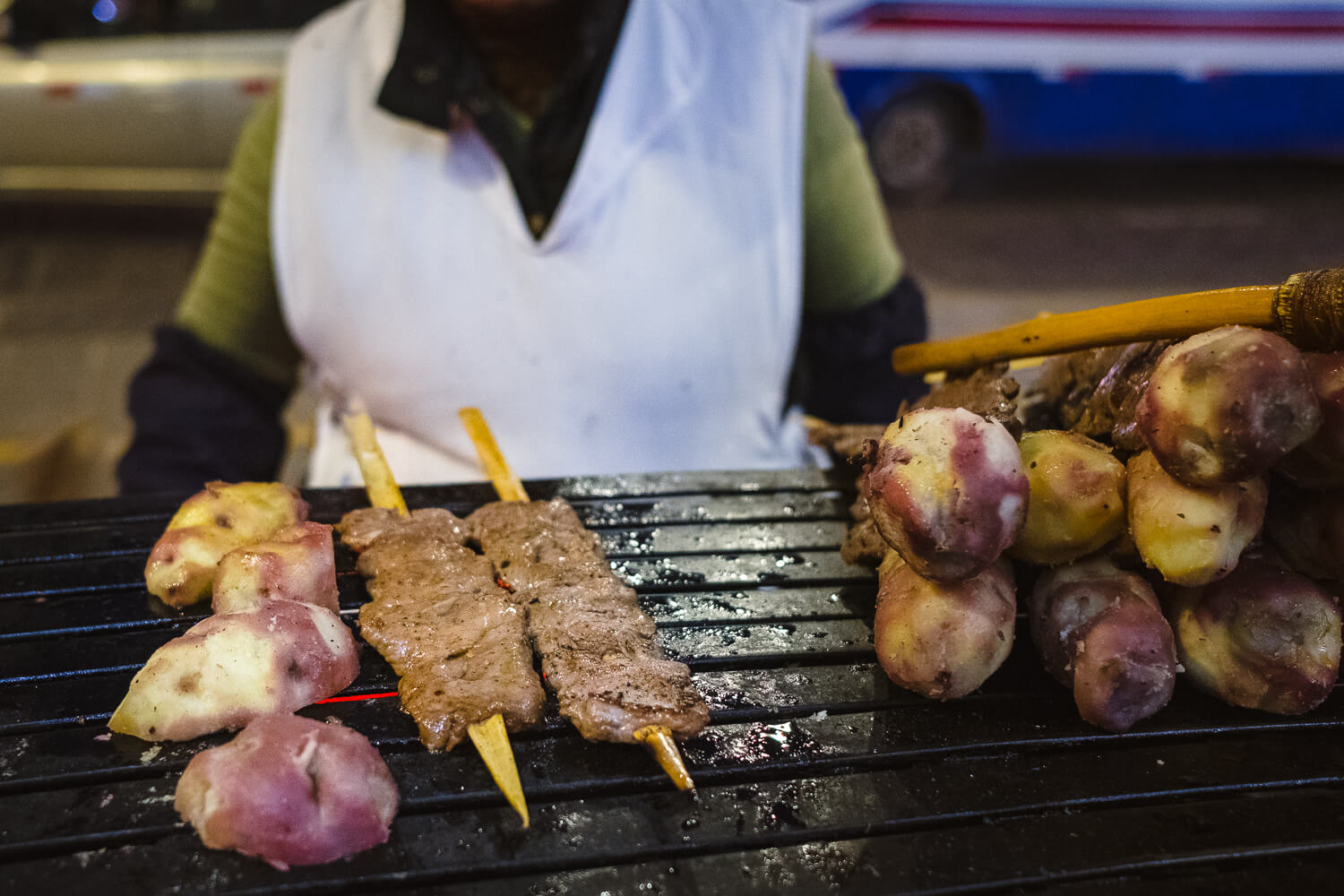
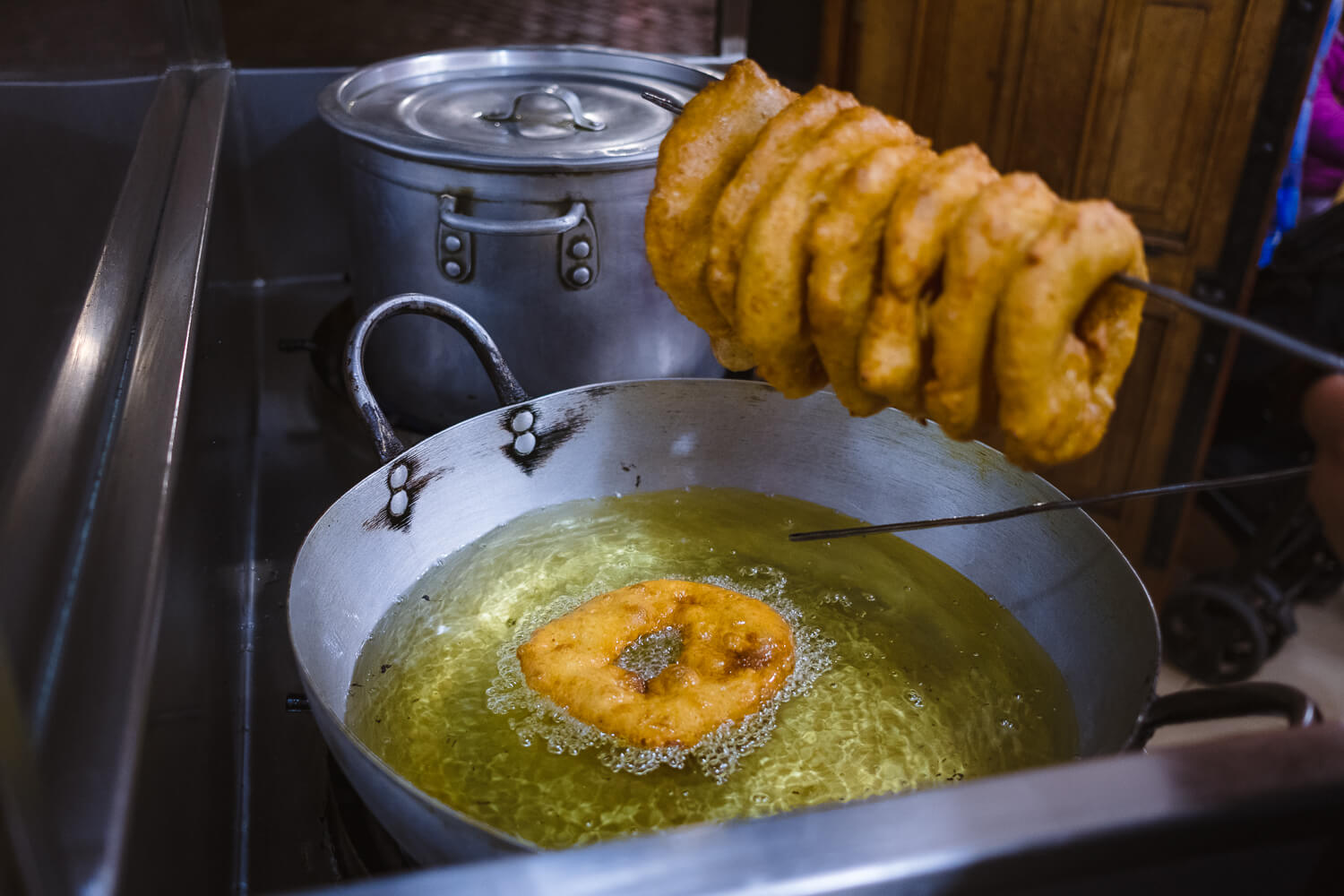
Street food tours are the best. Why? Because you get to sample a ton of new flavours, they’re generally researched so you know you’re getting the best vendors and you learn a little something along the way. Not to mention, if you’re intrigued by street food but scared of getting sick, it’s a safe way to do it.
In full disclosure, I did get a free tour, but as with all things on my website, I give honest reviews.
Corrine, the owner of Curious Monkey, clearly has a passion for food and she’s developed a relationship with some of her favourite local vendors. She took us to six different stops that evening and we finished completely stuffed.
Curious Monkey offers food tours based on your interest, so if street food isn’t your thing they can guide you through the San Pedro Market or take you outside the city to learn about potatoes and coffee in the Sacred Valley.
Corrine is offering 10% off food tours to all my subscribers (min of two people).
Other Restaurants
For other restaurants, check out the markers on my above map. A few standouts:
Chicha por Gaston Acurio
This is the second restaurant opened by world-famous chef Gaston Acurio. His first is in Lima.Juanito's
A local sandwich shop.Where to stay in CUSCO
Some links below are an affiliate link, meaning, at no additional cost to you, I will earn a commission if you click through and make a booking. As always, I only recommend products and services I trust.
Cusco is great because there’s affordable accommodation in the center of the city. Because I was splurging on other things I opted for a budget location, which was La Morada Suites.
La Morada Suites - Cusco
La Morada Suites
La Morada is a small hotel, with large and clean rooms. It offers a tasty, yet modest breakfast and a terrace area that's perfect for views of the city. It's affordable and the laundry is really cheap, so if needed, this is a great place to get your clothes cleaned.These are some other places that look beautiful, are close to the city center and have great online reviews:
Aranwa Cusco Hotel (Mid-Range)
With old stone walls and antique furniture, this place has got an old luxury to it. The guests rave about the breakfast, service and the fact that the rooms have oxygen pumped into them.Book at Aranwa Cusco Boutique Hotel
Garden of San Blas (Mid-Range)
Intricate decoration in the rooms and all the reviews talk about the friendly owner, Jesus. Some rooms come equipped with spa baths which are a great way to relax from a day of sightseeingAntigua Casona San Blas (Mid-Range)
It's got a covered and peaceful looking courtyard, which is perfect for relaxation before any strenuous hiking. Both the service and on-site restaurant get rave reviews.Cusco Photography TIPS
Cusco is a city that’s prime for street photography. People are generally used to tourists snapping photos, just be respectful.
The Pisac market in particular is where vendors will ask for money if they notice you taking their picture. I find it better to ask before snapping there.
For context, the photos I took above at Saqsaywaman are golden hour, sunset. While sunrise is better timing, it won’t be open that early.
Safety In Cusco
Cusco is packed with tourists because it’s the hub for most travellers visiting Machu Picchu. This means pickpocketing and small scams are common. When in busy areas and marketplaces, keep your valuables within sight. Cross-body bags are always good for ladies.
Know that if you snap pictures of locals, they may want money in return.
I never felt unsafe, but I attribute a lot of that to having a good driver and guide.
How to Prevent Altitude Sickness
I followed every tip and doctor recommendation I could find. To say I was paranoid about altitude sickness would be an understatement. I had previous experience in the mountains of Colorado and knew what little oxygen would do to me but I can happily report, I had no issues in Peru.
Everyone’s body will react differently and the best thing to do is consult with your doctor before travelling.
I also developed a cheatsheet listing all the things I did that helped me avoid getting sick.
Subscribe and download it for free.
Acclimating in the Sacred Valley (a lower altitude than Cusco) is a smart way to travel through the region. Check out my article on the Sacred Valley.
Getting Around Cusco
The flight from Lima to Cusco is just under an hour and a half. It’s a beautiful view so try to get the window seat so you can see the Andes. It can get a bit bumpy since you’re flying over a mountain range. If you’re an anxious flyer, read this interview with a pilot, she helped me get over my fear of flying.
Once you’re in Cusco, getting to and from the airport is fairly easy, it’s only a 20-minute drive. I organized a driver with my hotel to avoid taxi scams. If you’re a confident negotiator you’ll aim to pay roughly 15 soles ($3.50USD) for a taxi, however they’ll probably start at double that.
All the main sites in Cusco are walkable. A driver is needed for the destinations outside the city. Drivers are easy to book, just ask your hotel to do it. While you can book a driver alone, I suggest getting a local guide.
I met Carlos, a local guide, in The Sacred Valley. I was only supposed to have him as a guide for one day but I ended up booking him for two more.
Most drivers don’t speak English and having a guide not only helps navigating the area, but they tend to have a good knowledge of the regional history too.
He’s offering 10% off his services for all my subscribers.
Carlos with our group in Pisac
Looking for a Good Read?
The link below is an affiliate link, meaning, at no additional cost to you, I will earn a commission if you click through and make a purchase. As always, I only recommend products and services I trust.
Recommended to me by a friend who was reading it during our trip, Turn Right at Machu Picchu, by Mark Adams, is a fun way to learn about the history of the region.
It recounts the author’s journey to retrace Hiram Bingham’s steps to find Machu Picchu.
It’s filled with history and comedy, as he makes his way through the mountains and jungles.
Need help Planning?
Want to visit Peru but have no time to plan?
I can help you create your perfect itinerary.























































I witnessed the talented Peruvian weavers of Patacancha, in the Sacred Valley. They shared their techniques and Inca traditions plus I learned how to spot synthetic vs. real garments in Peruvian markets.